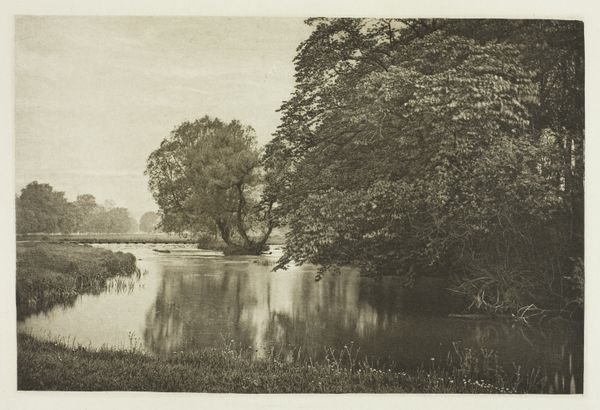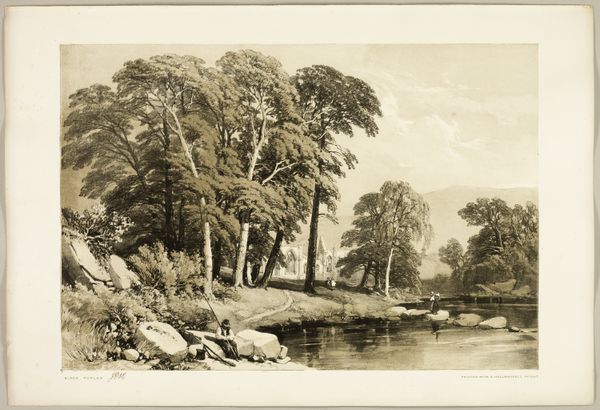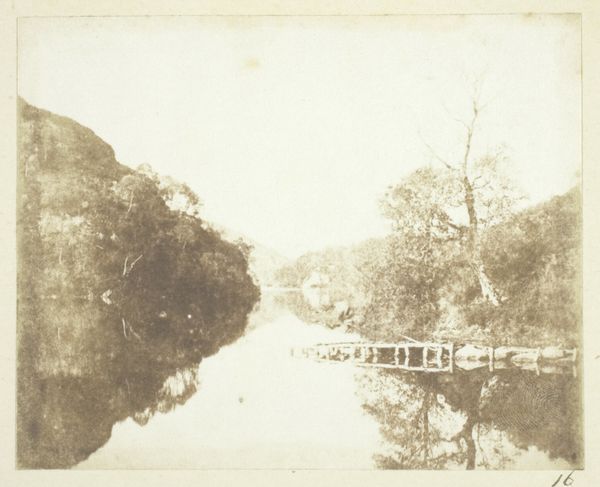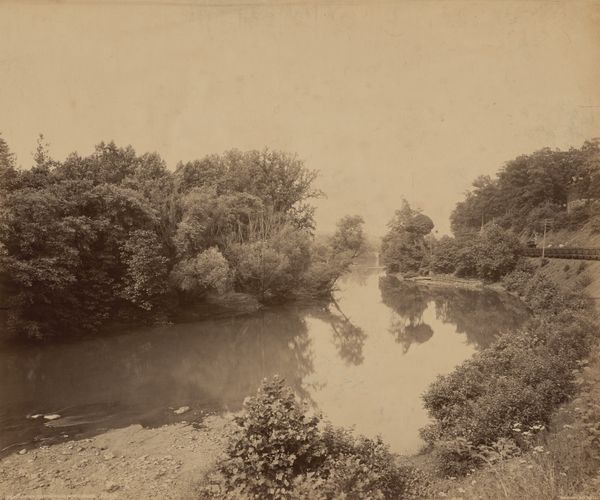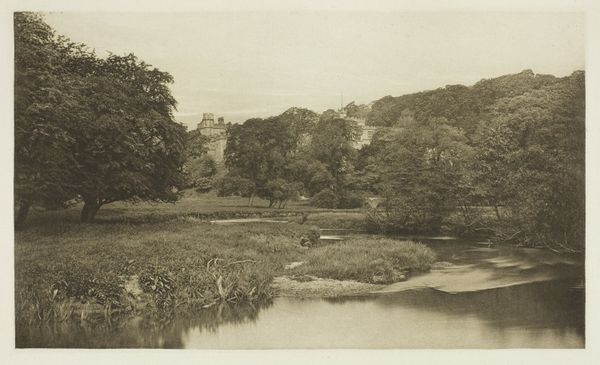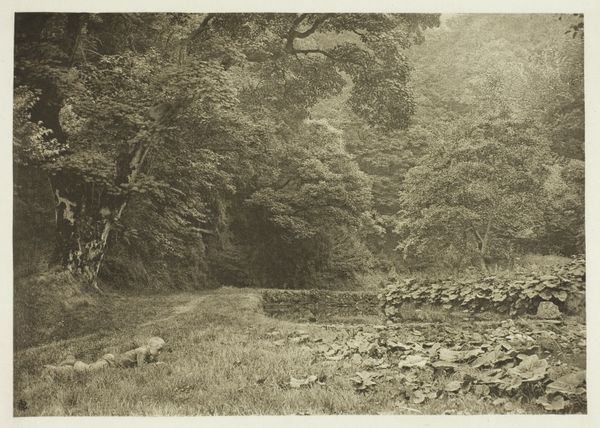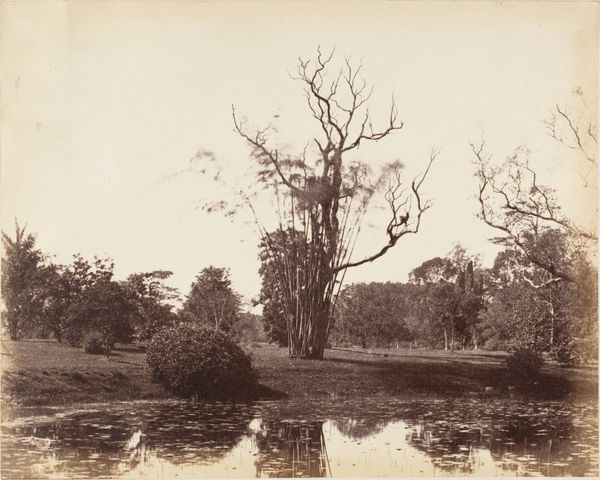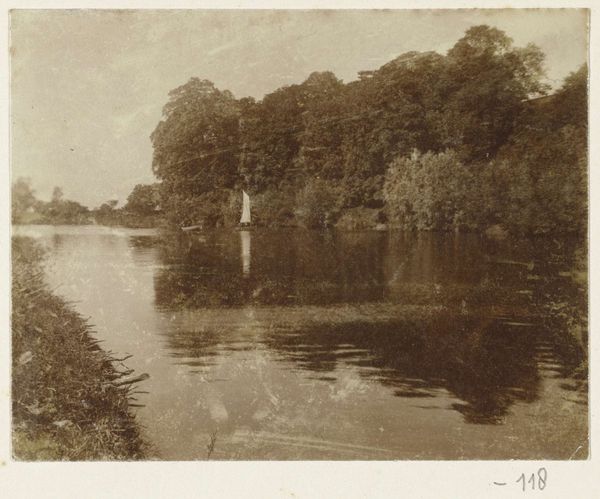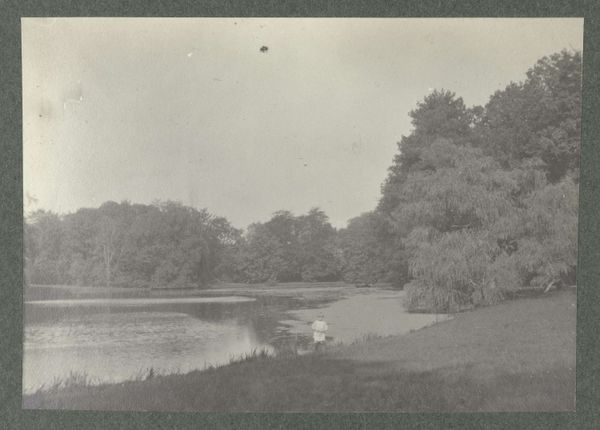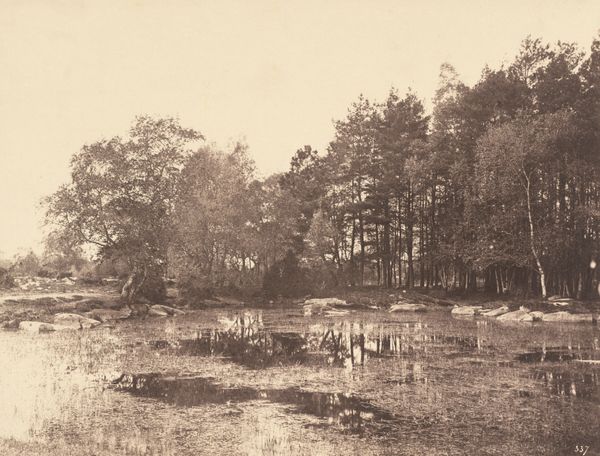
Dimensions: Image: 19.9 cm, 24 7/8 in. (7 13/16 × 24 7/8 in.)
Copyright: Public Domain
This view of the River Wharfe in Yorkshire was captured by John Dillwyn Llewelyn using the waxed paper negative process. This photographic method, which was popular in the mid-19th century, involved coating paper with wax to make it translucent, then sensitizing it with chemicals to capture a latent image. The paper’s texture and the chemical reactions give the print its soft, almost dreamlike quality. Look closely, and you can see the delicate fibers of the paper and the subtle variations in tone, a direct result of the hand-made process. The image is not simply recorded but crafted. Llewelyn, a skilled amateur, used a process that democratized image-making to some extent, removing it from the exclusive realm of painting. Yet, photography, even in its early days, still required specialized knowledge and equipment. By exploring these early photographic techniques, we gain insight into the labor involved in image production and question the traditional hierarchy between art and craft.
Comments
No comments
Be the first to comment and join the conversation on the ultimate creative platform.
